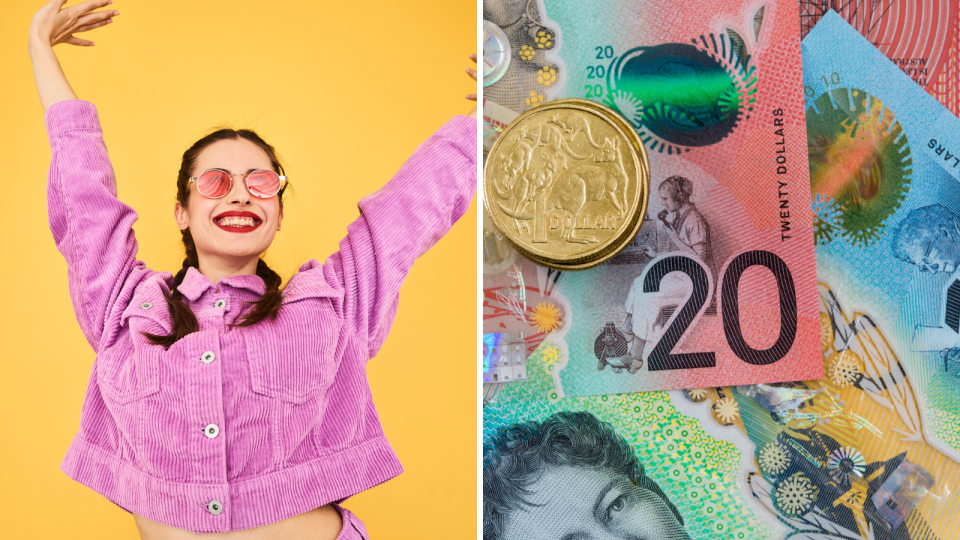AUD surges: What it means for you

The Australian dollar has surged to pre-coronavirus levels, hitting 70.36 US cents on Tuesday, after sinking to a 17-year low in March.
The AUD has rebounded partly on perceptions that the Aussie economy is recovering quickly, according to AMP chief economist Shane Oliver.
“The rebound likely reflects a combination of ‘risk on’, that sees the Australian dollar move up with shares, perceptions that the Australian economy is doing better than the US economy, strength in Australia’s key export market of China and the Fed’s Quantitative Easing program swamping the Reserve Bank of Australia’s,” Oliver said.
Westpac currency strategist Sean Callow told the ABC it’s also due to China’s rebounding economy, which will likely bring back interest in Australia’s exports.
Now, many of us might be questioning what to do with our cash.
What should I do with my money when the AUD is high?
When the AUD is low, we tend to bring any money we have sitting overseas back to Australia.
When it’s low, we do the opposite. Or, if you don’t have anywhere to send your cash to, you can simply exchange your cash now while the dollar is high, and keep it for an upcoming holiday.
Alternatively, you can enter into a forward contract. This is when you don’t need to make an international money transfer, but you want to lock in a great rate anyway.
This means you can lock in the rate for a future transfer, which is usually within three months to a year.
If you’re looking to capitalise on a stronger Aussie dollar, Mozo spokesperson Tom Godfery told Yahoo Finance to invest in industries that rely on imports.
"As the Aussie dollar strengthens, the cost to companies that rely on imports to do business should go down,” Godfery said.
“In theory this should increase their profitability and ultimately your return.”
You can also consider foreign exchange trading, which attempts to make a profit by predicting the value of one currency compared to another.
Although, Godfery stated this can be high risk, so it’s not something you want to rush into.
And, if you love online shopping, it’s time to buy up.
"As the dollar strengthens your overseas purchasing power should improve. So if you like purchasing from international sites, your favourite products and services might be a little cheaper.”
How much will my holiday cost me now?
Exchanging $10,000 today to USD would see you get US$7,030 - that’s $1,041 more than if you converted it in March when the AUD hit a low of 59.89 US cents.
It’s still a way off from when the AUD hit highs of 81 cents against the greenback back in January 2018.
And, further still from when the Aussie dollar traded at its highest on 27 July 2011, with $1 AUD buying US$1.108.
That would have seen you gain cash on conversion: Converting your AUD to USD in 2011 would have earned you US$11,000 - around $4,000 more than what the AUD is worth today.
Will the RBA consider negative interest rates?
The RBA made no mention of the rebound in the dollar in its monetary policy meeting minutes, but a surge in the AUD could spell bad news for economic recovery, Oliver said.
“Right now, the RBA does not appear to be too concerned but the surge in the value of the $A [but it] may become a problem for the RBA as it’s a defacto monetary tightening which could dampen the economic recovery,” he said.
And while it’s tempting to think the RBA should take interest rates into negative to make the Australian dollar less attractive, Oliver said this would be a “big mistake”.
“Negative interest rates would just create confusion amongst the Australian public and there is little evidence that they have helped in Europe and Japan,” he said.
“As such RBA Governor Lowe has said on numerous occasions that negative interest rates are ‘extraordinarily unlikely’ in Australia, and we think this will remain the case.
“Rather the preferred approach to providing more stimulus and to bring down the $A from here if needed would be via increased quantitative easing allied perhaps with a ten-year bond yield target of say around 0.5 per cent.”
Are you a millennial or Gen Z-er interested in joining a community where you can learn how to take control of your money? Join us at The Broke Millennials Club on Facebook!

 Yahoo Finance
Yahoo Finance 
